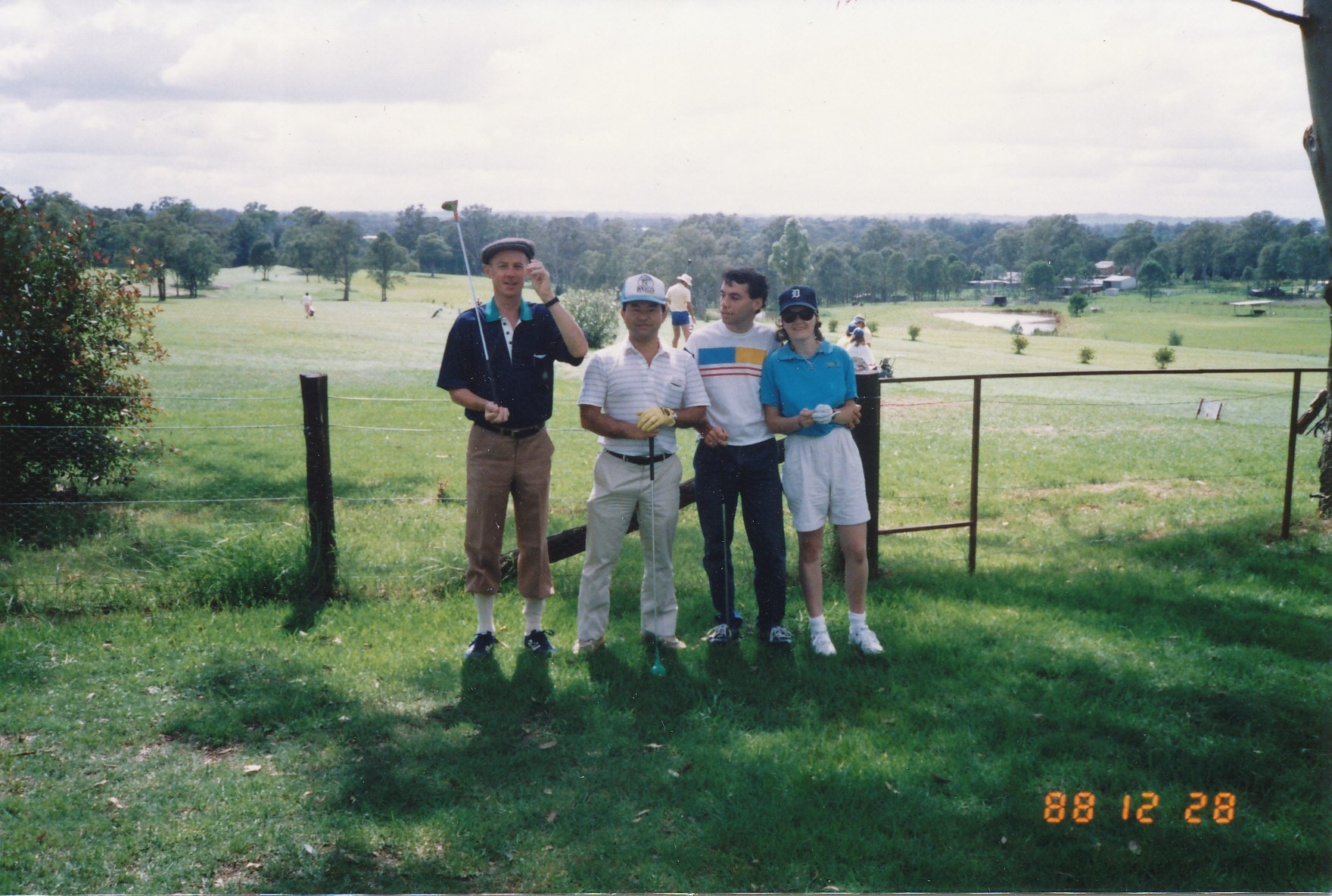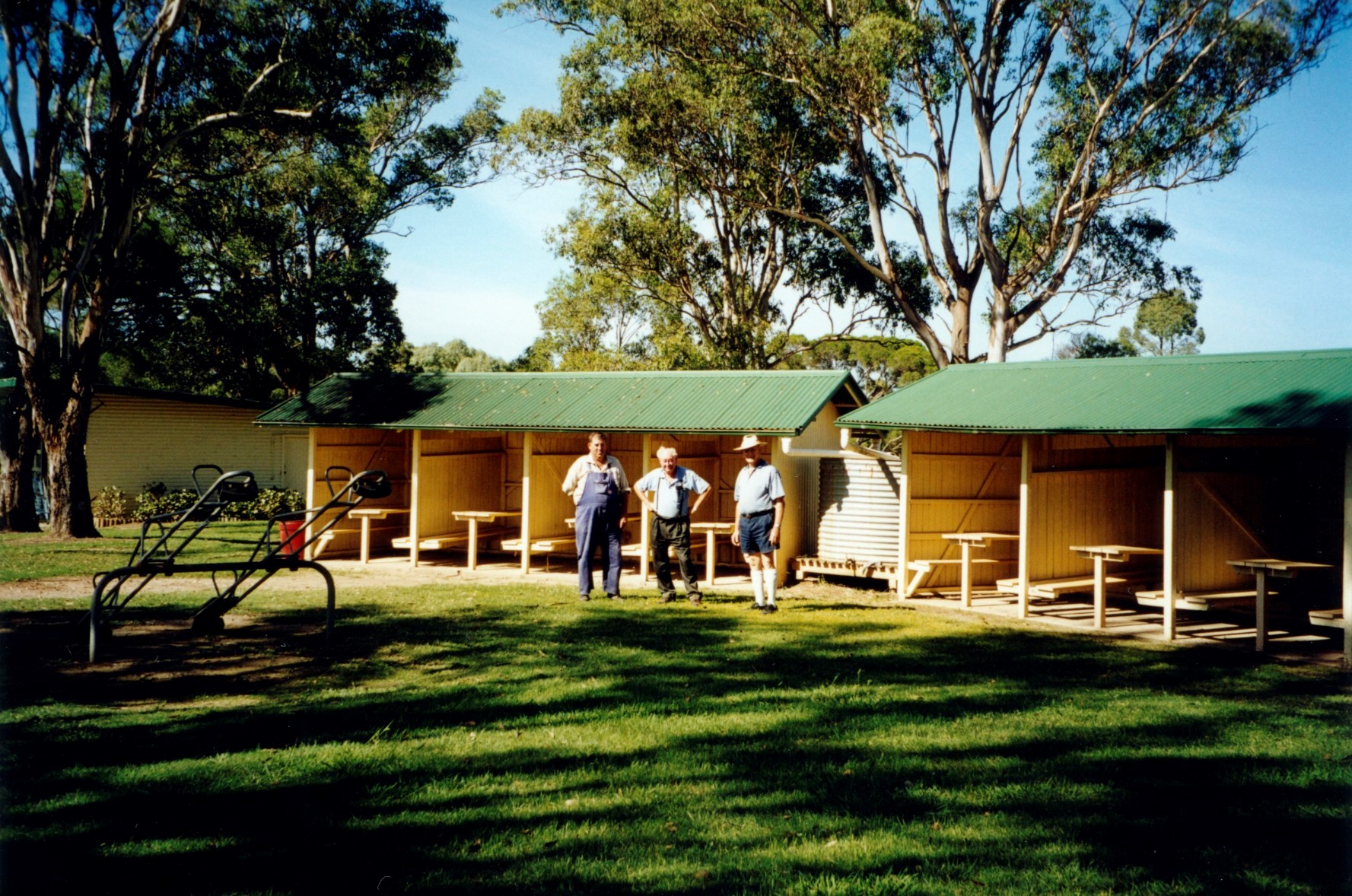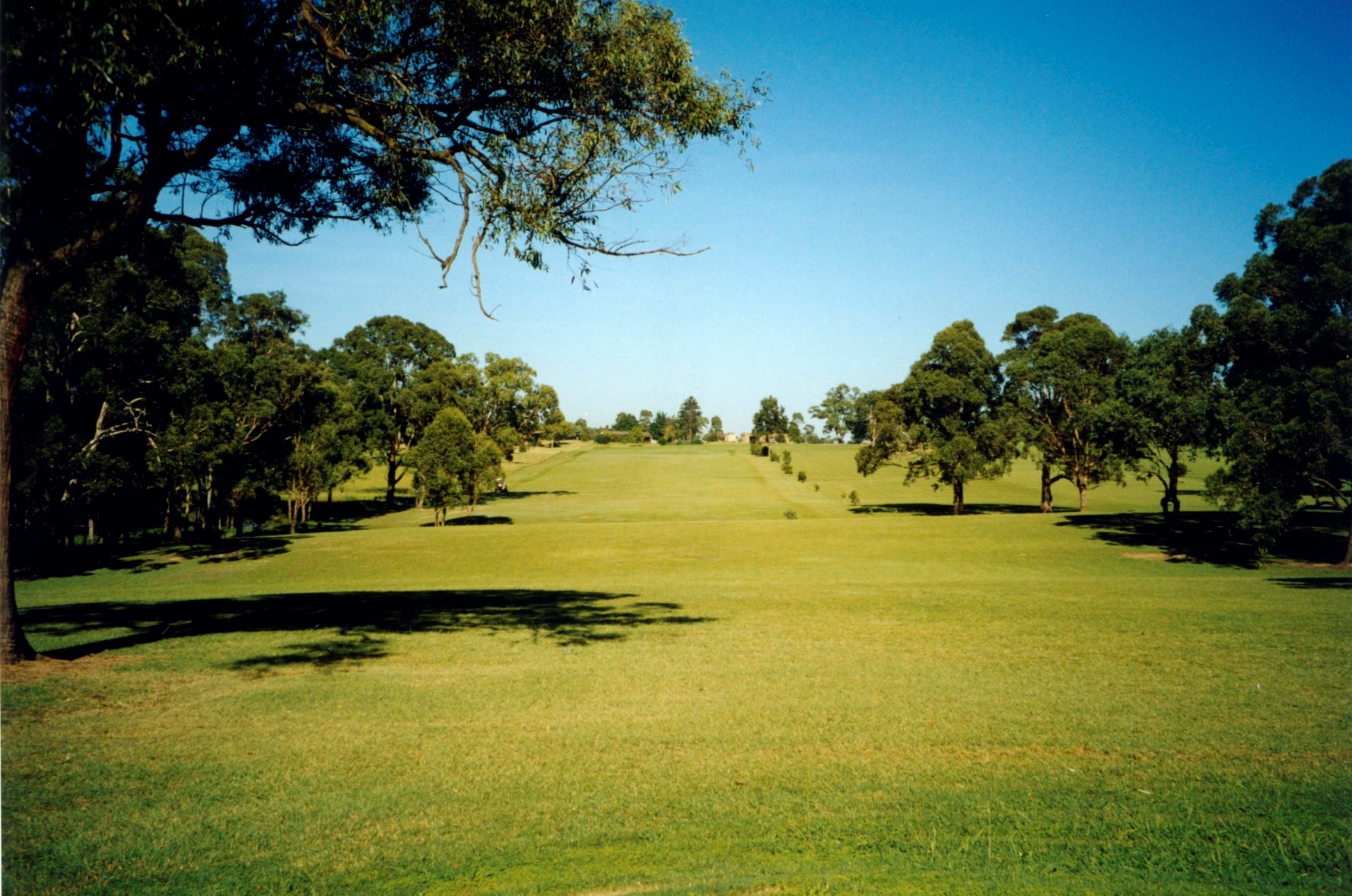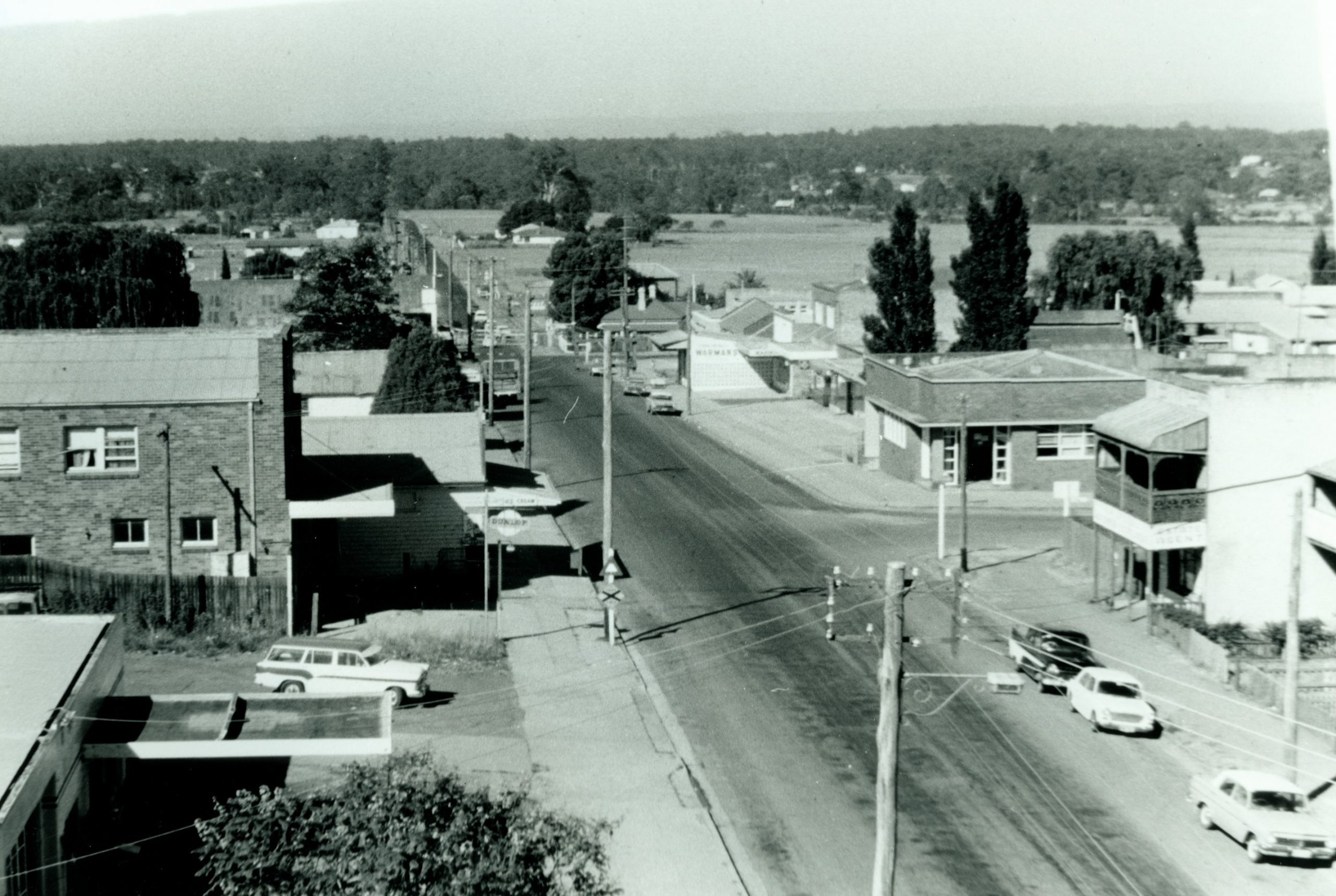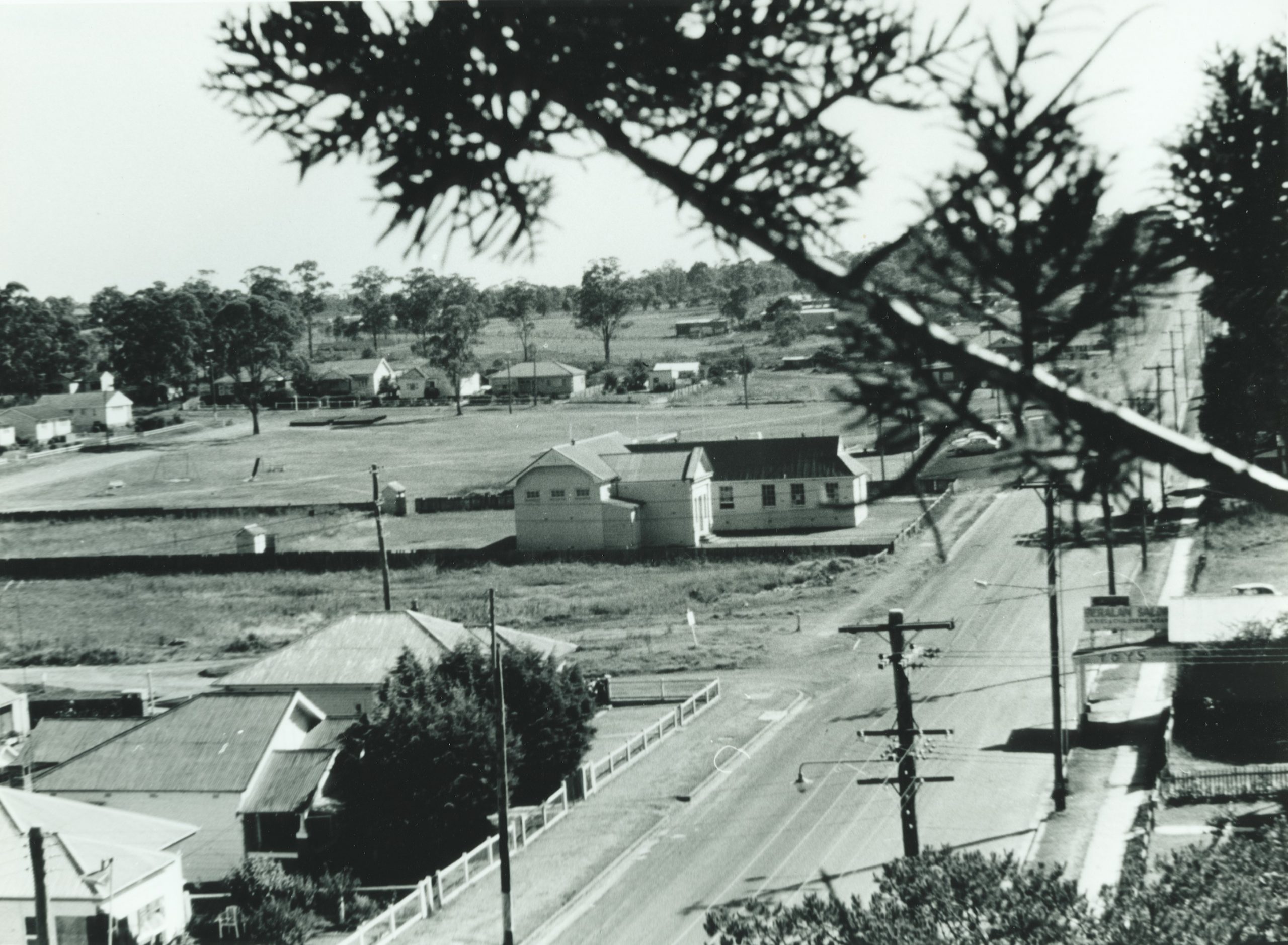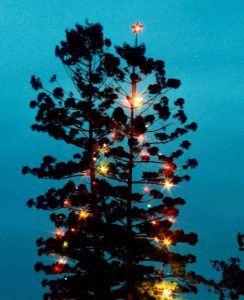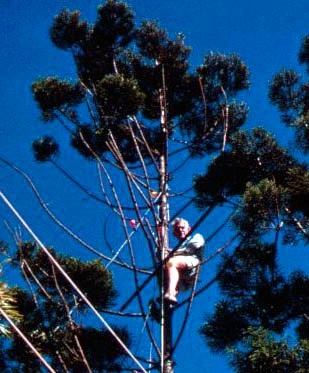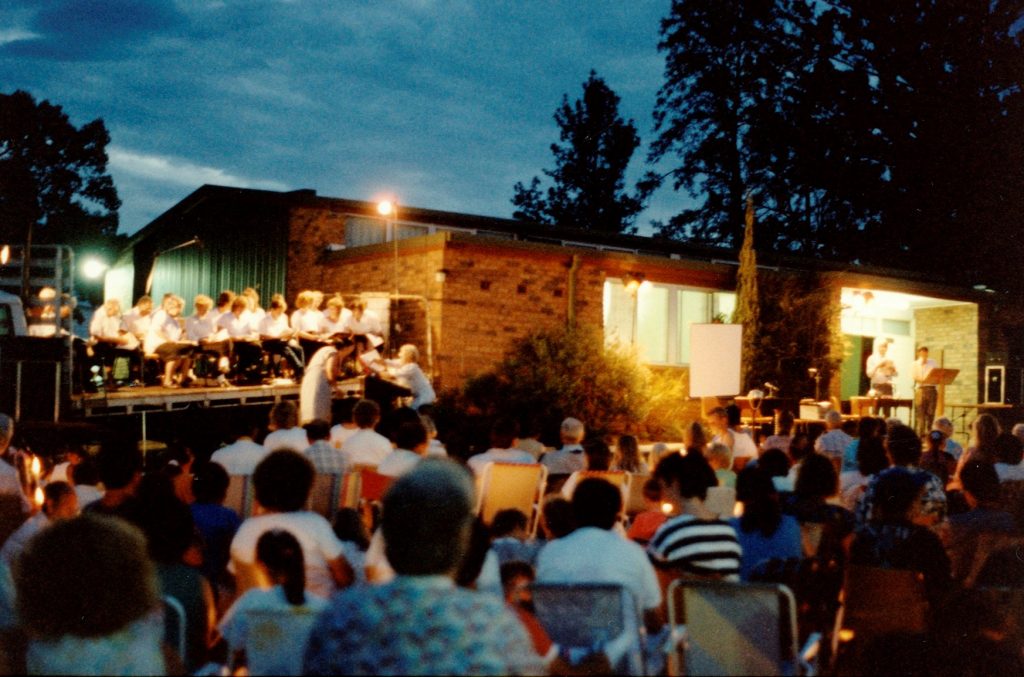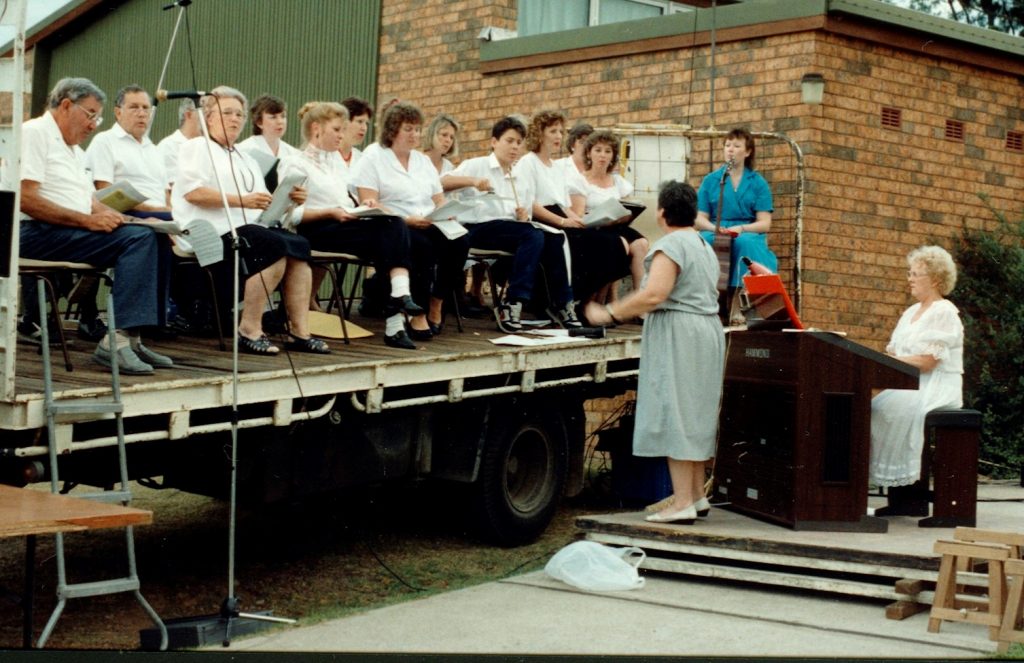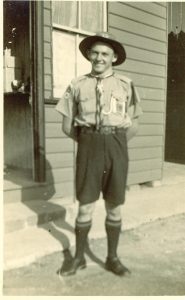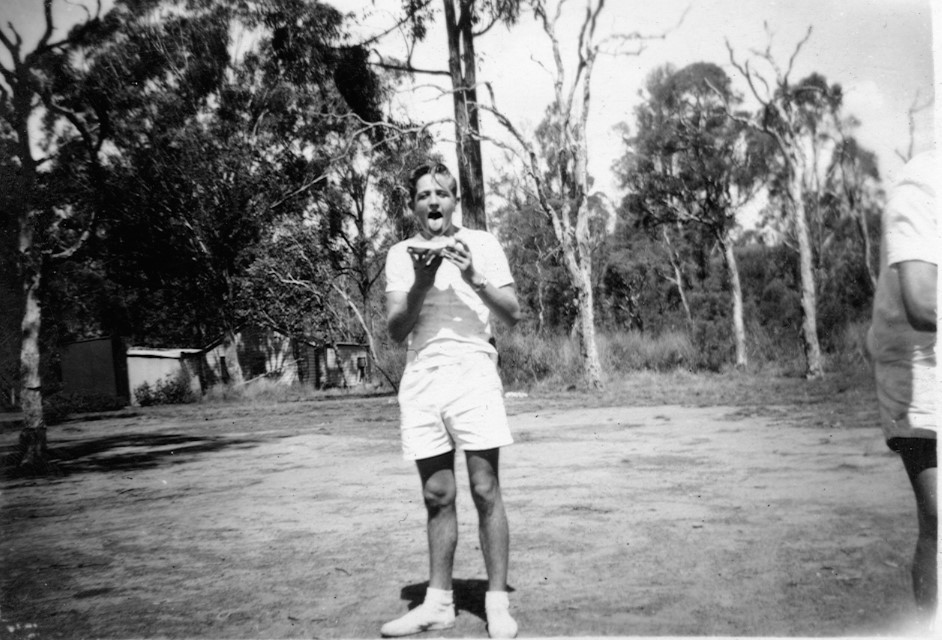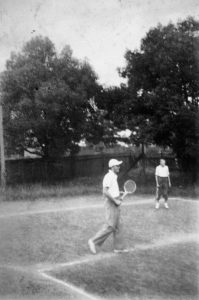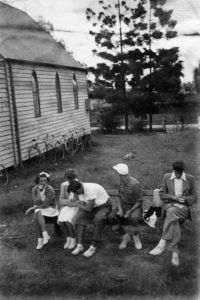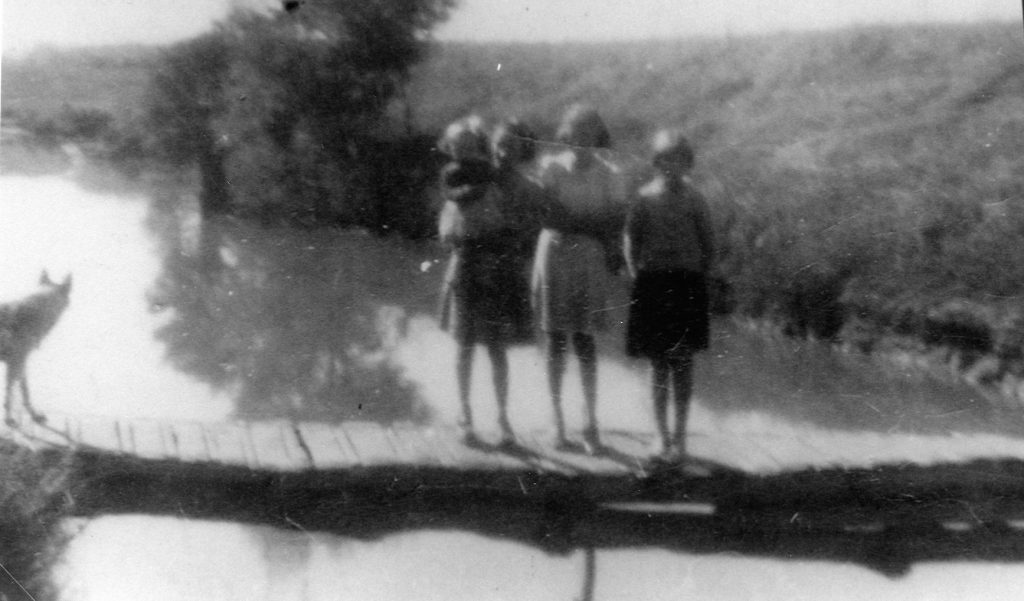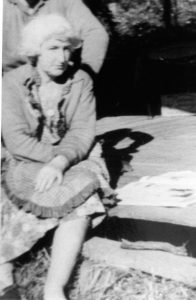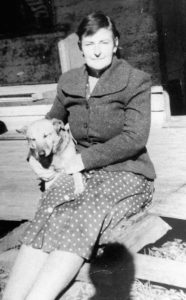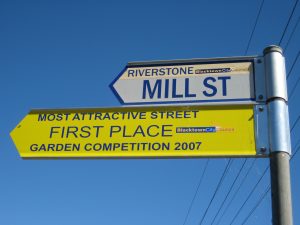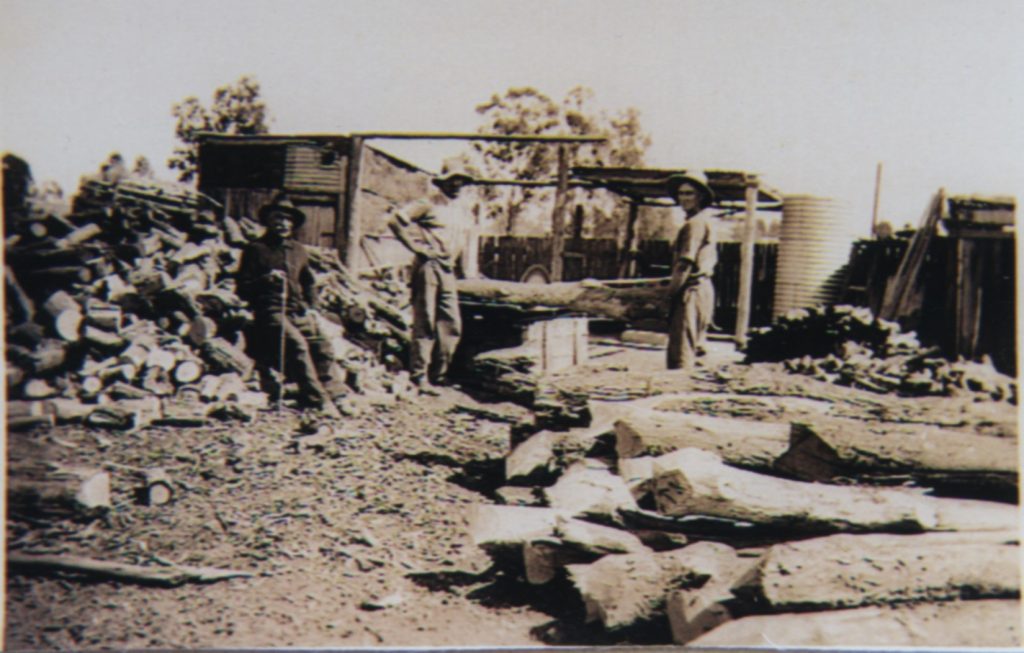by Clarrie Neal
The Iori families from Italy first made contact with Australia in 1927 when Pelligrino Iori and his brother-in-law Ugo Burlati arrived in Sydney aboard the Cita Genoa.
They worked a variety of jobs on a property at Merriwa in the Hunter Valley to save the money to bring their wives to Australia. Their wives arrived in 1932. Maria Iori was accompanied by their son Edo. They continued to work on the farm but living conditions were so bad the families moved to Smiths Lake. Conditions there were not much better but they were eventually able to save the money to purchase 45 acres of land at Rouse Hill in 1933. The two families, along with another brother-in-law, Joe Zampelli, moved to Rouse Hill in 1936 and each settled on their own 15 acre block.
The Iori’s youngest son Jack was born at Tuncurry in 1934 and was two years old when the family arrived at Rouse Hill. Now aged 72, he has a wonderful memory and delivers an interesting account of how an Italian migrant family coped with their new way of life in Australia at that time.
Rouse Hill was an area of widely scattered farms, serviced only by a Post Office that also served as a small general store and for many years the store was run by a Mrs Cooper. The only tarred road in the district was the Windsor Road. Garfield Road into Riverstone was a series of pot holes and gutters and Mile End Road where they lived was nothing more than a bush track. The family used a horse and sulky to travel into Riverstone to get their groceries and supplies, though sometimes they would travel to Windsor for their shopping.
Jack’s earliest memories of life on the farm include watching his mother make the cream and their lovely soft cheese. He remembers the family using the war time ration coupons to obtain food and clothing, and his mother and father working all the time. Their first house was built of fibro and comprised three rooms. A verandah was added and later another two bedrooms. It had a corrugated iron roof and was equipped with a fuel stove, an ice box, and there was a well in their backyard.
While setting up the farm and for many years after Pelligrino worked at the Riverstone Meatworks. After laying out his garden beds, he set up a poultry farm, using poles cut from the surrounding bush as the posts. Later in life Jack often marvelled at his father’s ability to build, he was so good with his hands, given a hammer, a saw, timber and a piece of wire he could build anything.
Jack recalled the family had really good relationships with all their neighbours except one, and remembers feeling hurt on the occasions when they were referred to as ‘dagos’.
The family were understandably concerned when Italy sided with Germany during the War, the fear of internment in a camp was an ever present threat. After Immigration officials had first checked with other residents in the district, the Iori family were then interviewed. The family was considered to be low risk and fortunately never subjected to internment, though the officials did take possession of a .22 rifle.
The family grew all their own vegetables and sold their surplus produce and eggs. Jack recalls his duties as a child were to wash up every night, lock up the poultry sheds each night to keep out the foxes, and milk their two cows. Sometimes these jobs were shared with his older brother Edo. He also helped the baker from Castle Hill deliver bread along Mile End Road.
There were no organised sports in Rouse Hill, we used the nearby creek as a swimming hole and for fishing, and we made catapults to shoot the birds, so we still had a lot of fun. Jack has wonderful memories of sitting on a slide and being pulled around the paddocks by their horse ‘Betty’; the slide was a home made wooden frame with flat steel bars fitted underneath to allow easier sliding.
Jack attended Rouse Hill Public School, it was a one teacher school. In the Rouse Hill School book printed in 2000 Jack had this to say about his years at school – 1939 to 1947:-
When I started school there was a total of 15 kids. Ted Harris was Principal and teacher, on his own. He lived next door in the school residence. Ted owned a 1927 Chev tourer; Len Robinson, a cheeky kid, said “Sir, why do you drive so slow?” and Ted’s answer to this was, and I’ll never forget it, “Any fool can go fast, but it takes a wise man to go slow”. I travelled to school by legs for the first two years, then a push bike.
The school introduced us into growing vegetables, then we had a long dry spell, so it was back into the books. Mum’s lunch box surprise – old sandwiches. Favourite pastimes – Fishing, French cricket. Best friends – Tony Rasmussen. I really enjoyed my days at Rouse Hill school.”
During the War he remembers his brother Edo helping to build the Air Raid shelter in the school grounds. Other good school mates of those days were Norm Hession and Joe Mezzomo. Jack said the children played the usual school games but one game that was always popular with them was French cricket. With no cricket bats available the bats were made by Jack using a machete to shape the wooden lids off a lettuce box. In 2006 Jack was surprised to learn that renovation work on the Rouse Hill school building had unearthed some interesting artefacts under the floor boards – a hand made cricket bat and a spelling exercise book with the name ‘J. Iori’ shown.
Jack commenced his secondary schooling at Parramatta Marist Brothers. To get there he had to ride his bike to Kellyville to catch the bus. There were no other bus services other than the two services each day for the schoolchildren. One day as Jack was riding his bike to the Windsor Road, it fell apart. After hiding the bike in the bush he hitched a ride from Mile End Road to Kellyville. Pleased with his efforts, he hitched a ride again the next day and continued this form of travel till the day he left. Regular drivers knew he was on his way to get the school bus so they always stopped for him.
Traffic on the Windsor Road was totally different then. Jack recalled some days he would wait up to five minutes or more for a car or truck to come along. He recalled hearing the trucks changing their gears as they struggled to climb the hills near Rouse Hill school.
Jack somehow managed to fail his first year at Parramatta Marist Brothers and was performing no better in his second year. One day he plucked up enough courage to approach the Marist Brothers to get permission to leave the school to enable him to help his parents with the farm. Jack was somewhat surprised at their response when they told him – “Well, you’re only wasting our time here at school, you may as well leave now,” – and so ended Jack’s last day at school.
The farm continued to grow, they had two draught horses that were used to plough the fields and were used, with a scoop, to dig their first dams. In later years the horses were replaced by the bulldozer. Water was often pumped from Second Ponds Creek into their dams, Jack recalled sometimes the only noise you could hear of a night was the drone of the pumps.
The poultry farm continued to expand, and they gradually increased the number of range fed hens. The range hens were kept as layers for three years and then sold on the market as boilers, often selling at a dollar each. They were known as boilers because they were best if boiled first and then roasted. Chicken those days was not the popular meal it is today.
In the 1950’s the Egg Marketing Board was an organisation formed to manage the distribution of eggs from the farms to the shops, the Iori family held a PA authority to supply several stores in the district. In later years Jack was elected as a Director of the Egg Marketing Board and held that position for 13 years. Farmers opinions were sharply divided on the Board’s functions, some farmers thought it was great while others thought it served no useful purpose at all.
Jack well remembers an outbreak of Laryngeo Tracheitis that killed all their fowls and his father sitting down on a box in the shed, crying at their loss. Eventually a suitable vaccination was discovered and the family set about restocking their farm.
The family formed a company known as P. Iori & Sons and became one of the largest farms in the district, employing seven girls in the egg shed and another four outside. The biggest changes occurred when the boys were able to convince their father to obtain a loan from the bank of $1,700 and change from the open range system to the caged system. Their father had lived through the years of the depression and was understandably wary of the banks, he believed they would go bankrupt.
They laid the concrete paths and Edo who was a welder constructed the sheds. They made a cart to collect the eggs and Jack well remembers the day he heard his father say after he had collected all the eggs in less than an hour, “that used to take me three to four hours”. From that day on he stood back and allowed the boys more latitude to run the business. The poultry business continued to expand until they had 40,000 layers, their farm became one of the largest in the district.
They ran a pig farm for approximately 15 years and all their porkers and baconers were sold to the Riverstone Meat Co. Jack recalled at the time the Company buyer was Kevin Welk, Norm Brown was the yard foreman, and Gray Bloxsom was the manager.
Jack believed the market garden was the hardest work of all and returned the least income. He recalled the time he packed 80 cases of cucumbers and sent them to the markets where there was a glut. He received nothing for the cucumbers, then had to pay $4 to have them dumped.
Farmers in the Rouse Hill area relied on trucks owned by Jack Peterson to carry their produce to the markets. On the return trip he would carry their stock feed and other goods.
There was little in the way of entertainment in those days, there was no TV. Jack recalled they would take their wind up gramophone down to the Rouse Hill church hall to play their records. Their first family car was a Singer bought in 1945, they would all pile in and drive to the cinema at Castle Hill for their Saturday night out. The extended families would always get together at Christmas and again at Easter at one of their homes.
At the age of 18 Jack was called up to do Army National Service training at Holsworthy. It was the first time he had ever been away from home and admits he missed home so much that he cried a lot for the first two weeks. The Army training left a great impression on him and he now looks back on it as a highlight of his teenage years as it taught him how to live and co-operate with other people.
He recalled that more than 60% of the residents in Mile End Road were farmers, and that most were of Italian origin. The majority of the remainder worked at Riverstone Meatworks as there was little scope to get employment elsewhere.
Jack recalls the residents of Mile End Road in the 1950’s were Mitchell, Darcy Mills, Brown, Wrights, Derkson, Shields, Dr. Money, Taylor, Cooper, Mezzomo, Burlati, Zampelli, Iori, Jennings, Lelants, Hicks and Pike. Along the road a good community spirit prevailed, and it was particularly evident during times of illness.
Jack is proud of his parents, how hard they worked, of what they achieved, and the standards they set for the boys to work hard and achieve. Apart from the normal household duties he recalls his mother every day making cream and cheese, going into the cold shed washing and packing the eggs. Jack also remembers his mother continually patching their trousers.
Maria and Pelligrino lived to within a few days of their 90th birthdays, and both passed away in the 1990’s. They have been honoured by their families with a stained glass window in the Catholic Church at Kellyville, and a recently opened park in Mile End Road named ‘Maria Iori Park’.
Rouse Hill remained a rural community until 1990 when urban development commenced. Jack always had ambitions to build shops in Rouse Hill but it took many years of battling with the bureaucracy to finally get the approval to build a restaurant, grocery store, Post Office and a liquor outlet. The shopping centre was expanded in 2000 and now comprises 16 shops and 3 office units.
Jack has never known anything other than work, and has no intention of retiring. He likes to quote “Some people want it to happen, some people would like it to happen, but you’ve got to make it happen.” He is a great supporter of local charities and of St. Vincents Hospital and is well known in the district for being there in time of need. He is a staunch supporter of the Parramatta Eels and the walls of his office are covered with Parramatta team photos and signed guernseys.
Jack and his wife Margaret celebrated their Golden Wedding Anniversary in 2006. They have lived all their life in Mile End Road where they raised their three children – Karen, Diana and Steve. For 26 of these years Margaret managed the Rouse Hill Post Office.
Jack has dedicated his life story to his parents Maria and Pelligrino, who played an enormously important role in his upbringing and in the development of his character traits of hard work, early to rise, integrity, and a deep and abiding love of family. He is very proud of his Italian ancestry and of his Australian citizenship and every day likes to fly the Australian boxing kangaroo flag in front of his home. He believes Australia has benefited greatly from its acceptance of migrants from Italy and their Italian foods.
The Iori families have made the effort to become wonderful Australians and the local district community can be proud of them.
Compiled by Clarrie Neal from information and photos provided by Jack Iori, August 2006.
Addendum: In 2008 John (Jack) Iori was awarded a Medal of the Order of Australia for service to the egg industry through roles in industry regulatory bodies and to the community of Rouse Hill.
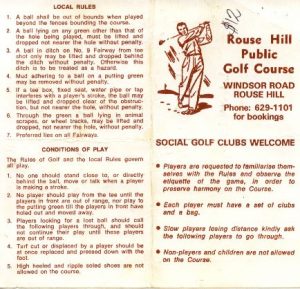 It is hard to imagine that the land on the Sydney side of the Rouse Hill Anglican Church centre and the shopping centre which now houses McDonalds, Red Rooster and Aldi, was once a quaint nine hole golf course, known as the Rouse Hill Public Golf Course. Indeed, by my estimation, Mile End Road runs along where the third and fourth fairways once lay.
It is hard to imagine that the land on the Sydney side of the Rouse Hill Anglican Church centre and the shopping centre which now houses McDonalds, Red Rooster and Aldi, was once a quaint nine hole golf course, known as the Rouse Hill Public Golf Course. Indeed, by my estimation, Mile End Road runs along where the third and fourth fairways once lay.